Ecommerce
eCommerce Marketing Analytics 2024 Playbook
Matt Swulinski |
April 16, 2024
The release of iOS 14.5 significantly impacted digital advertising by enhancing user privacy and limiting tracking capabilities. This change necessitates eCommerce businesses to adapt their tracking and analytics strategies.
The imminent transition to a cookie-less world adds another layer of complexity, demanding more sophisticated and compliant tracking solutions.
Leveraging Elevar for Enhanced Tracking
Elevar offers a suite of solutions designed to overcome these challenges by ensuring accurate and efficient tracking:
Session Enrichment: This feature enhances the ability to recognize returning users, crucial for personalized marketing efforts.
Server-Side Tracking: By integrating over 40 channels with one API, Elevar simplifies the data collection process, enabling a more comprehensive understanding of customer behavior.
Conversion Monitoring: This tool ensures that no conversion goes untracked, providing businesses with a complete picture of their marketing funnel's effectiveness.
Data Layer and GTM for Shopify: Elevar offers a robust data layer that facilitates the tracking of customer data across Google Analytics, marketing tags, and Shopify Web Pixel, thereby addressing the accuracy issues arising from iOS 14.5 and ad blockers.
Understanding the Role of TripleWhale
TripleWhale complements Elevar by addressing the discrepancies in reporting across different advertising platforms. Each platform tends to attribute full credit to itself for conversions, which can lead to inflated and inaccurate performance metrics. TripleWhale's solution integrates data from all advertising platforms, Shopify, and post-purchase surveys to provide a clear and accurate picture of which channels and even specific ads are most effective for customer acquisition.
Key Takeaways for eCommerce Businesses
Embrace Server-Side Tracking: To mitigate the impact of iOS 14.5 and prepare for a cookie-less future, businesses should leverage server-side tracking solutions offered by tools like Elevar.
Holistic View of Advertising Effectiveness: Utilize platforms like TripleWhale to integrate data from various sources, ensuring a more accurate attribution model that acknowledges the contributions of different channels to the customer journey.
Focus on Data Accuracy and Privacy Compliance: With the increasing emphasis on user privacy, it's crucial to implement tracking solutions that are not only accurate but also compliant with regulations like GDPR and CCPA.
By integrating these strategies and tools into their marketing analytics efforts, eCommerce businesses can navigate the challenges posed by evolving digital landscapes, ensuring that they remain competitive and capable of delivering personalized, effective marketing campaigns.
Let’s deep dive how you can get started with this for your eCommerce business.
Part 1: Navigating the Post-iOS 14.5 Era with Elevar
In the wake of iOS 14.5, eCommerce businesses have faced unprecedented challenges in tracking user interactions, leading to significant implications for advertising and analytics. Elevar emerges as a pivotal tool in this landscape, offering server-side tracking solutions that circumvent the limitations imposed by iOS updates and browser privacy enhancements. This section outlines the essential steps eCommerce decision-makers must take to integrate Elevar, ensuring resilient and effective tracking mechanisms in a privacy-focused world.
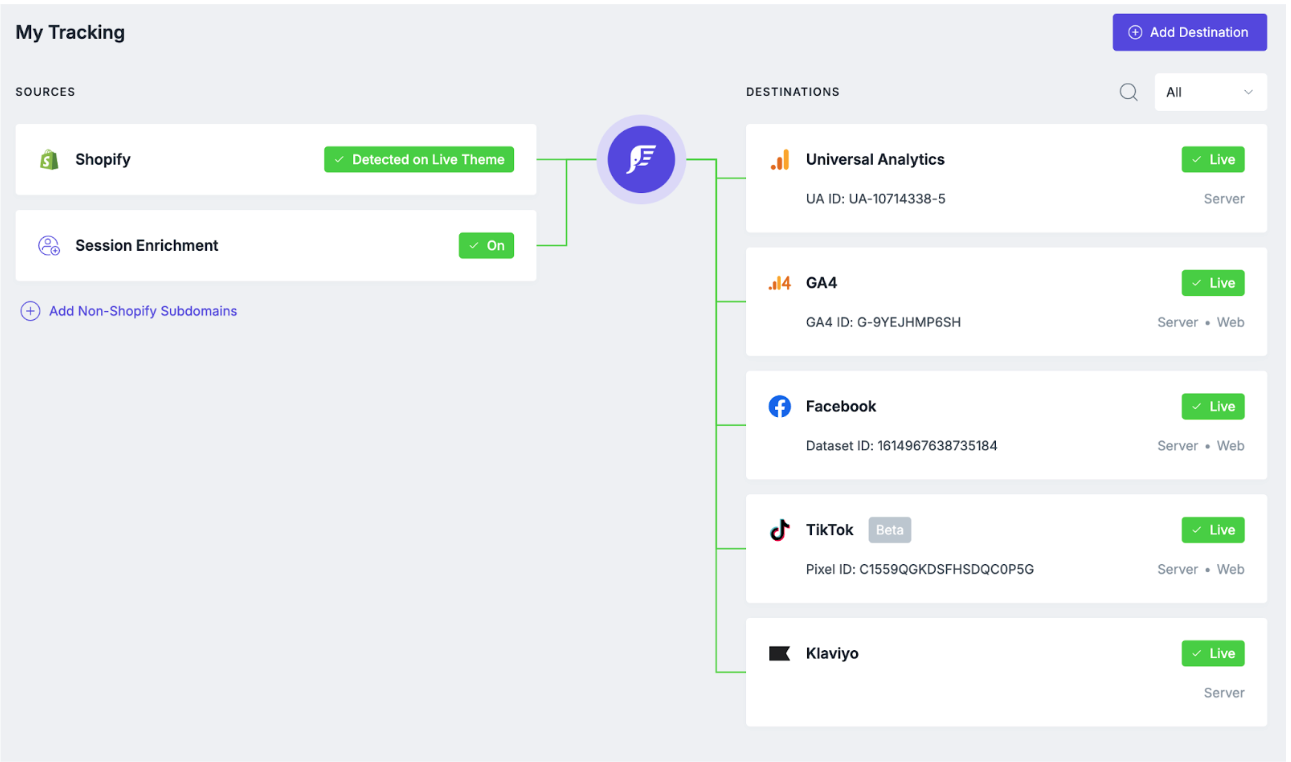
Step 1: Understanding the Significance of iOS 14.5
Before diving into Elevar, it's crucial for eCommerce decision-makers to grasp the full extent of iOS 14.5's impact on digital marketing. With users now able to opt-out of tracking, a significant portion of valuable customer data that businesses relied on for personalized advertising and analytics has become inaccessible. This change necessitates a pivot to more privacy-compliant and robust tracking solutions.
Step 2: Embracing Server-Side Tracking with Elevar
Server-Side Tracking Overview: Server-side tracking involves sending data directly from your web server to analytics platforms, rather than relying on client-side scripts. This approach offers improved data accuracy, privacy compliance, and resilience against ad blockers and browser restrictions.
Benefits for eCommerce: For eCommerce businesses, server-side tracking means maintaining visibility into customer behaviors and conversions, even amid tightening privacy regulations. By leveraging Elevar's server-side capabilities, businesses can ensure a steady flow of actionable data, crucial for optimizing marketing strategies and enhancing user experiences.
Step 3: Getting Started with Elevar
Create an Elevar Account: Visit Elevar's website and sign up for an account. Choose the plan that best fits your business size and needs, considering the volume of data you expect to process.
Connect Your eCommerce Platform: Elevar supports integration with several eCommerce platforms, including Shopify. Navigate to the integrations section in your Elevar dashboard and select your eCommerce platform. Follow the prompts to authorize Elevar to access your store data.
Setting Up Server-Side Tracking: Elevar simplifies the process of setting up server-side tracking through its user-friendly interface.
Navigate to the "Server-Side Tracking" section within Elevar.
Choose the marketing channels and analytics platforms you wish to integrate, such as Google Analytics, Facebook Pixel, and more.
Follow the guided setup process, which involves entering API keys and configuring data endpoints for each platform.
Configuring Data Layer and GTM: The data layer is a critical component of server-side tracking, acting as a structured data format for collecting and transmitting information about user interactions.
Elevar provides tools to automatically generate and manage a robust data layer for your eCommerce site.
Integrate Google Tag Manager (GTM) with Elevar to leverage your data layer across various marketing and analytics services. This step involves copying a snippet of code from Elevar into your GTM container.
Testing and Validation: Before going live, it's essential to thoroughly test the server-side tracking setup to ensure data is accurately captured and sent to your analytics platforms.
Use Elevar's testing tools and diagnostics to verify the correct functioning of data collection and transmission.
Check the real-time data flow in your analytics and marketing platforms to confirm that user interactions are being tracked accurately.
Optimization and Ongoing Maintenance: After successful implementation, continuously monitor the performance of your server-side tracking setup. Elevar offers features like conversion monitoring and channel accuracy alerts to help you stay on top of your data quality.
Step 4: Leveraging Elevar for Strategic Insights
With Elevar's infrastructure in place, eCommerce businesses can harness detailed insights into customer behavior and conversion paths. Utilize this data to refine marketing strategies, improve targeting accuracy, and ultimately enhance the customer journey. Elevar's comprehensive reporting and analytics capabilities enable businesses to make informed decisions, driving growth and profitability in a post-iOS 14.5 world.
Conclusion
Setting up Elevar is a strategic move for eCommerce businesses looking to navigate the challenges posed by iOS 14.5 and beyond. By following these steps to implement server-side tracking, businesses can regain control over their data, ensuring continued success in their digital marketing efforts. The transition to server-side tracking with Elevar not only mitigates the immediate impacts of privacy regulations but also positions businesses for sustainable growth in an increasingly privacy-focused digital landscape.
Part 2: Preparing for a Cookie-less Future
The digital marketing world is bracing for a seismic shift as we move closer to a cookie-less future. This change, driven by increasing privacy concerns and regulatory actions, necessitates a reevaluation of how eCommerce businesses track user interactions and personalize experiences. Adapting to this new reality involves leveraging first-party data and privacy-compliant solutions. Elevar stands at the forefront of this transition, offering tools that empower businesses to navigate these changes effectively.
Step 1: Understanding the Cookie-less Landscape
The Decline of Third-Party Cookies: Major browsers are phasing out support for third-party cookies, which have been the backbone of online tracking and advertising. This shift disrupts traditional methods of audience targeting, remarketing, and conversion tracking.
Implications for eCommerce: The reliance on third-party cookies for tracking user behavior and measuring advertising effectiveness is coming to an end. eCommerce businesses must pivot towards strategies that respect user privacy while still delivering personalized experiences.
Step 2: Emphasizing First-Party Data with Elevar
First-Party Data Collection: Start by inventorying the first-party data you already collect, such as email interactions, purchase history, and onsite behavior. This data is gathered directly from your interactions with customers and is crucial for building personalized marketing campaigns.
Leveraging Elevar for First-Party Data: Elevar's server-side tracking capabilities are designed to maximize the value of first-party data. By integrating directly with your eCommerce platform, Elevar ensures that every customer interaction is captured accurately, from product views to completed purchases.
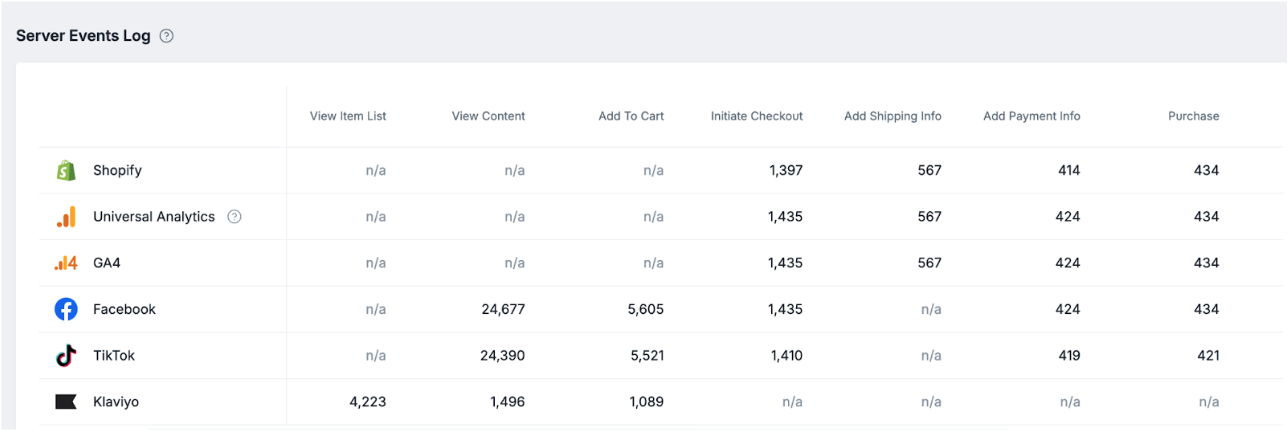
Step 3: Implementing Server-Side Tracking
Transitioning to Server-Side: Move from relying solely on browser-based (client-side) tracking to implementing server-side tracking. This approach sends data directly from your server to analytics platforms, circumventing the limitations imposed by cookie restrictions.
Setting Up Server-Side Tracking in Elevar:
Access the Elevar dashboard and navigate to the server-side tracking setup.
Select the analytics and marketing platforms you use, such as Google Analytics, Facebook Ads, etc.
Follow Elevar's guided setup process to configure the server-side integration, including API keys and endpoint URLs.
Data Layer Optimization: The data layer is a structured format for organizing and transmitting data about user interactions on your website. Elevar helps automate the creation and management of a robust data layer, ensuring your server-side tracking captures the full scope of customer activity.
Step 4: Ensuring Privacy Compliance
Understanding Privacy Regulations: Familiarize yourself with privacy laws relevant to your customer base, such as GDPR in Europe and CCPA in California. These regulations mandate how businesses collect, store, and utilize consumer data.
Configuring Elevar for Compliance:
Utilize Elevar's configuration options to ensure data collection practices align with privacy regulations. This includes setting up consent management protocols that respect user preferences regarding data tracking.
Regularly review and update your data collection and processing activities to remain compliant with evolving privacy laws.
Step 5: Enhancing Personalization without Cookies
Building Customer Profiles Using First-Party Data: Use the rich insights gathered from first-party data to build detailed customer profiles. These profiles will inform your marketing strategies, enabling personalized experiences without relying on third-party cookies.
Utilizing Elevar for Personalization:
Analyze the data captured through Elevar's server-side tracking to identify patterns and preferences in customer behavior.
Implement segmentation and targeting strategies based on this analysis, tailoring marketing messages and offers to match the interests and needs of different customer segments.
Step 6: Monitoring and Adapting Strategies
Continuous Data Analysis: Leverage Elevar's analytics capabilities to continuously monitor the effectiveness of your marketing strategies. Pay close attention to metrics that indicate engagement and conversion rates.
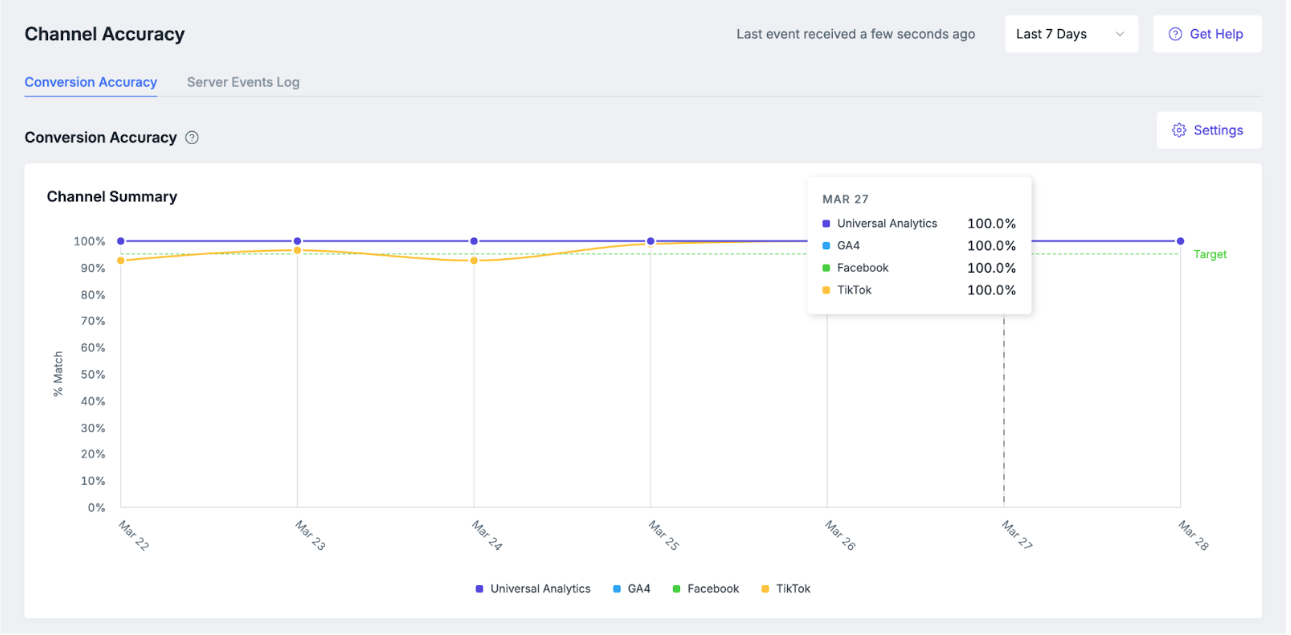
Adapting to Consumer Behavior:
Be prepared to adjust your marketing strategies based on the insights gained from your data. This may involve refining your messaging, offers, and targeting criteria to better align with customer expectations and behaviors.
Use A/B testing to experiment with different approaches, utilizing Elevar to measure the impact of these changes on customer engagement and conversions.
Conclusion
The journey toward a cookie-less future may seem daunting, but with the right tools and strategies, eCommerce businesses can navigate this transition successfully. By emphasizing first-party data and implementing server-side tracking with Elevar, businesses can ensure they continue to deliver personalized experiences in a privacy-compliant manner. This approach not only safeguards against the diminishing utility of third-party cookies but also positions businesses to build deeper, trust-based relationships with their customers. As the digital landscape evolves, the ability to adapt and innovate in response to these changes will be a key differentiator for eCommerce success.
Part 3: Mastering Advertising Efficiency with TripleWhale
The evolution of digital marketing compels eCommerce businesses to seek out tools that not only streamline their operations but also provide clarity and precision in their advertising efforts. TripleWhale emerges as a powerful ally in this quest, offering a comprehensive platform designed to cut through the noise of advertising data and deliver actionable insights. This section outlines the step-by-step process of integrating TripleWhale into your marketing strategy, ensuring that you can navigate the complexities of digital advertising with confidence.
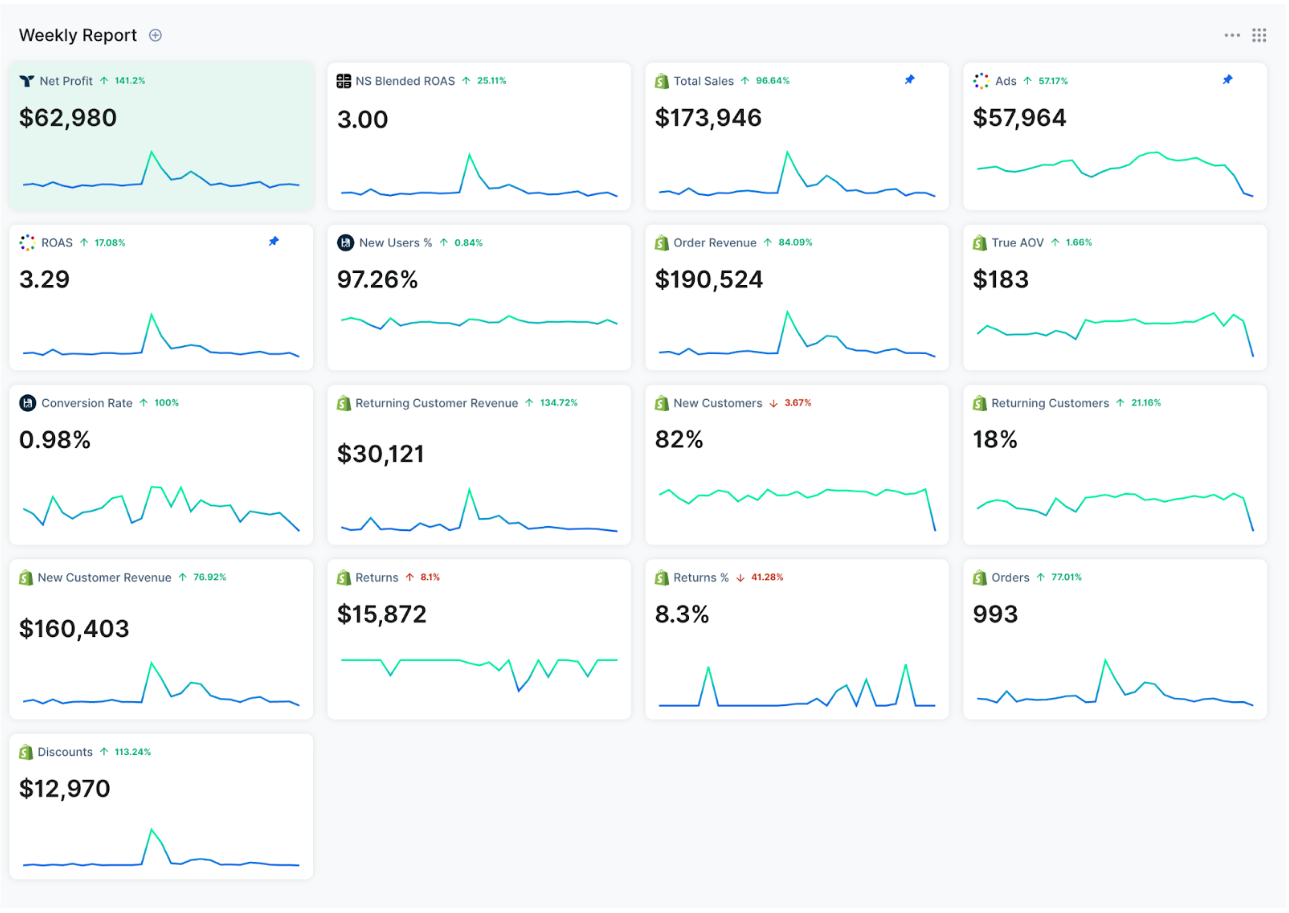
Step 1: Understanding TripleWhale’s Value Proposition
The Challenge of Disparate Data: One of the foremost challenges in digital advertising is the siloed nature of platform-specific reporting. Each advertising platform attributes success to itself, often leading to a skewed understanding of customer acquisition costs and the true impact of marketing efforts.
TripleWhale’s Solution: TripleWhale addresses this challenge by consolidating data from all advertising platforms, Shopify, and post-purchase surveys. This integration provides a unified view of your advertising performance, enabling you to discern which channels and specific ads are driving the most profitable customer acquisitions.
Step 2: Setting Up TripleWhale for Your Business
Initial Setup:
Sign Up: Begin by creating an account with TripleWhale. Choose a plan that aligns with your business’s size and data requirements.
Integration: Connect TripleWhale with your eCommerce platform (e.g., Shopify). This connection is critical for accessing sales data and other key metrics.
Advertising Platform Integration:
Integrate each of your advertising platforms with TripleWhale. This typically involves entering API keys or OAuth authentication for platforms such as Facebook, Google Ads, Instagram, and more.
Ensure that all relevant tracking pixels are correctly implemented on your site to accurately track conversions and engagement from these platforms.
Step 3: Leveraging Multi-Touch Attribution
Understanding Multi-Touch Attribution (MTA): MTA is a methodology that attributes credit to various touchpoints along the customer journey. It recognizes that multiple interactions contribute to a conversion, providing a more nuanced view of campaign effectiveness.
Configuring MTA in TripleWhale:
Access the MTA feature within TripleWhale’s dashboard.
Customize your attribution model based on your understanding of your customer journey. TripleWhale offers several models, including linear, time decay, and position-based attributions.
Analyze the data to identify which channels and touchpoints are most influential in driving conversions.
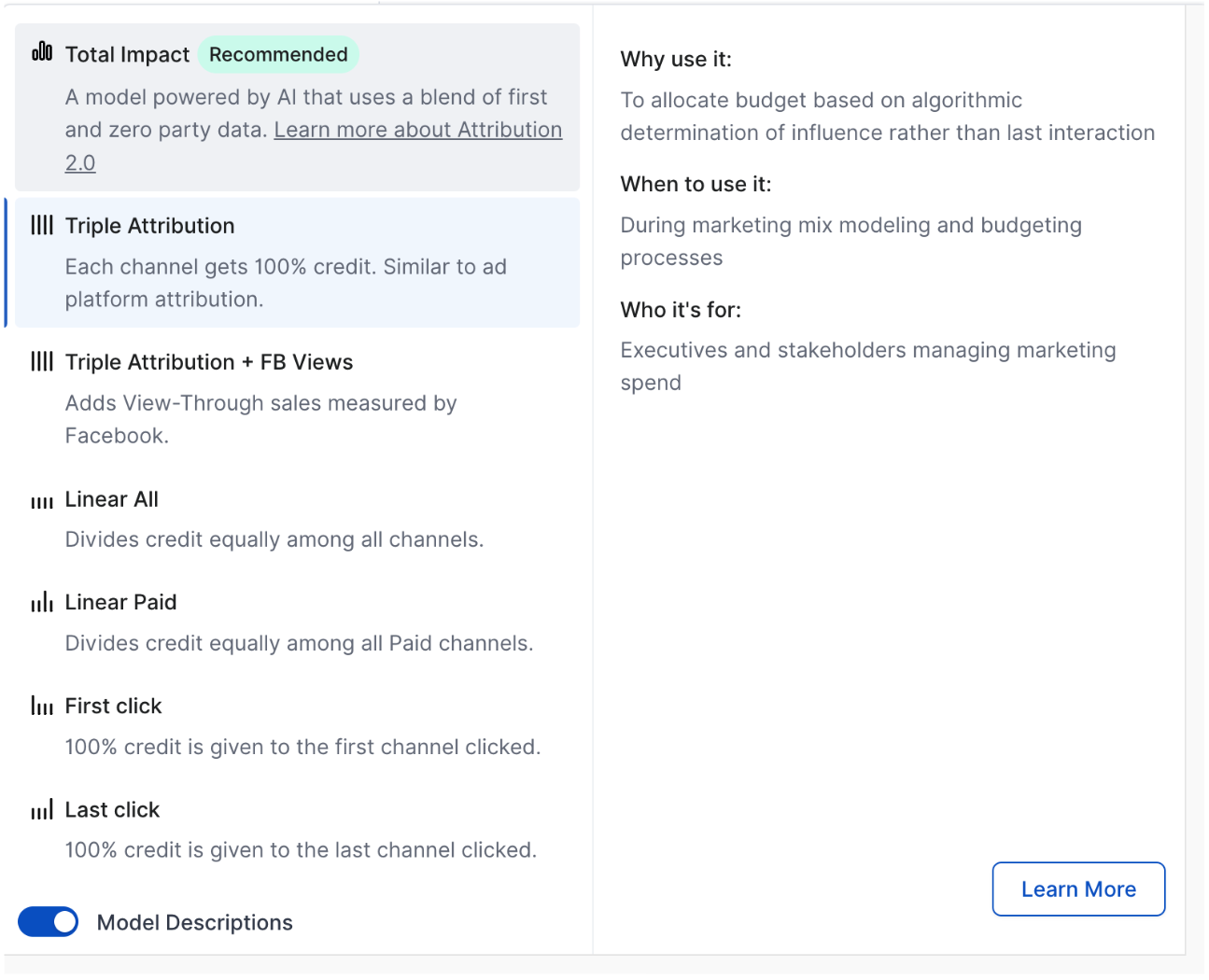
Step 4: Harnessing Shopify and Post-Purchase Survey Data
Shopify Integration:
TripleWhale’s integration with Shopify allows for real-time tracking of sales data, inventory levels, and customer interactions. This data is crucial for understanding the direct impact of advertising efforts on sales.
Implementing Post-Purchase Surveys:
Set up post-purchase surveys to gather customer feedback on their buying journey. These surveys can include questions about how customers discovered your brand and what influenced their purchase decision.
Analyze the responses to gain insights into the effectiveness of your marketing channels and to refine your targeting strategies.
Step 5: Analyzing and Optimizing Your Advertising Spend
Performance Dashboard:
Utilize TripleWhale’s comprehensive dashboard to monitor the performance of your advertising campaigns across all integrated platforms. Pay special attention to metrics such as ROAS (Return on Ad Spend), CPA (Cost per Acquisition), and CLTV (Customer Lifetime Value).
Optimization Strategies:
Identify underperforming campaigns and channels. Use TripleWhale’s data to understand the factors contributing to lower performance.
Allocate more budget to high-performing channels and ads, leveraging TripleWhale’s insights to maximize ROI.
Continuously test and refine your advertising creatives, targeting parameters, and campaign settings based on the data-driven insights provided by TripleWhale.
Step 6: Making Data-Driven Decisions
Actionable Insights:
Beyond mere data aggregation, TripleWhale offers actionable insights that can drive strategic decisions. Utilize these insights to craft more effective marketing messages, optimize campaign targeting, and improve the overall efficiency of your advertising spend.
Forecasting and Planning:
Leverage TripleWhale’s forecasting tools to plan future campaigns. Predictive analytics can help anticipate market trends, customer behaviors, and advertising performance, enabling proactive strategy adjustments.
Conclusion + Work with Us on YOUR Marketing Analytics
In the face of evolving privacy regulations and the shift towards a cookie-less world, leveraging advanced tools like Elevar and TripleWhale, along with other tools we use at FFG such as: Retention.com and Lifetimely, provides th eCommerce businesses we work with a competitive edge. These tools not only ensure compliance and data accuracy but also enhance advertising efficiency and deepen understanding of customer behavior and value.
Implementing these strategies requires a nuanced understanding of each tool and the ability to synthesize insights across platforms. Our team specializes in navigating this complex landscape, ensuring that your business can leverage these powerful analytics and marketing tools to their fullest potential.
To explore how we can help your eCommerce business thrive in this data-driven era, we invite you to schedule a consultation with our team. Together, we can craft a tailored strategy that harnesses the power of cutting-edge analytics and marketing tools, driving growth and ensuring your business remains at the forefront of eCommerce innovation.
